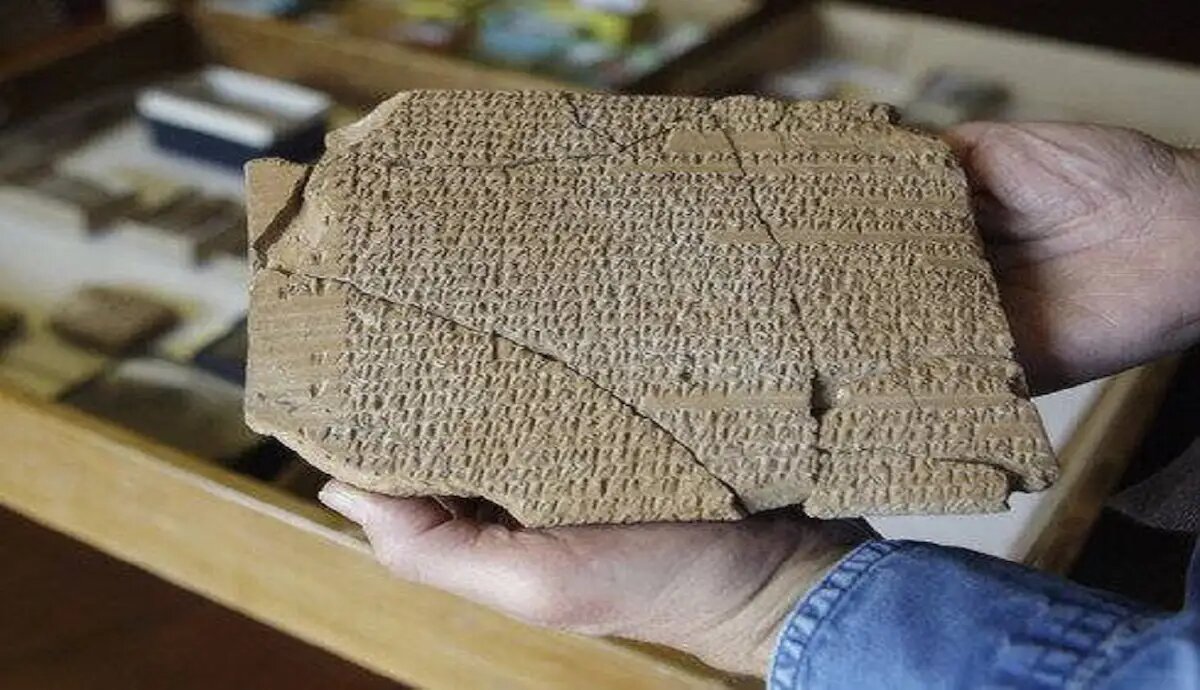Presidential souvenir: 3,506 Achaemenid tablets returned from U.S.

TEHRAN—This evening, when Iran’s presidential jet touched down in Tehran, it brought the fourth batch of Achaemenid clay tablets from the U.S., where they had been kept on loan for nine decades.
A total of 3,506 Achaemenid tablets were returned home by the plane carrying President Ebrahim Raisi, who addressed the 78th session of the United Nations General Assembly during his visit to New York.
The recovered collection consists of 836 small tablets written in Aramaic and 2,670 large tablets with cuneiform inscriptions in Elamite, CHTN reported.
“Thanks to proper follow-ups by the Ministry of Cultural Heritage, Tourism and Handicraft Organization, the permanent mission of Iran to the United Nations in New York, and the Ministry of Foreign Affairs, the tablets of the Achaemenid Empire, which were being kept in the United States and the Center for East Asian Studies at the University of Chicago (CEAS) for 84 years were repatriated to Iran. The tablets were originally set to stay there for three years for study purposes,” Raisi told reporters upon arrival at Tehran’s Mehrabad Airport.
“It is questionable why the tablets were in the possession of Americans. The scientists who worked on the tablets are of Iranian origin, and have been undertaking studies on them for more than 10 years,” he stated.
The Iranian president said the clay tablets will be delivered to Iranian museums to be put on display.
The royal tablets were shipped in nine boxes each weighing 75 kg, the report said. They were reportedly produced during the reign of Darius I, commonly known as Darius the Great, who served as the third King of Kings of the Achaemenid Empire, reigning from 522 BC until he died in 486 BC.
Earlier in August, Iran’s deputy cultural heritage minister said the United States was set to return over 20,000 Achaemenid clay tablets to Iran within months. “The good news is more than 20,000 Achaemenid tablets belonging to Persepolis will be returned from the U.S. by the end of this year,” Ali Darabi said.
So far, hundreds of those tablets (and fragments), which have been on loan from Iran to the Oriental Institute of the University of Chicago since 1935, have been returned home. For example, in 2019, Iran received 1,783 of those important objects being kept at Chicago’s Field Museum of Natural History and the University of Chicago’s Oriental Institute.
In February 2018, following years of ups and downs, the fate of those ancient Persian artifacts was left in the hands of a U.S. Supreme Court, which ruled in favor of Iran.
Archaeologists affiliated with the University of Chicago discovered the tablets in the 1930s while excavating in Persepolis, the ceremonial capital of the Persian Empire. However, the institute has resumed work in collaboration with colleagues in Iran, and the return of the tablets is part of a broadening of contacts between scholars in the two countries, said Gil Stein, director of the Oriental Institute at the University of Chicago.
They are very important sources of information revealing economic, social, and religious data about the Achaemenid Empire (550-330 BC) and the larger Near Eastern region in the fifth century BC.
Persepolis, locally known as Takht-e Jamshid, was the ceremonial capital of the Achaemenid Empire. It ranks among the archaeological sites, that have no equivalent, considering its unique architecture, urban planning, construction technology, and art.
Narratives say that Persepolis was burnt by Alexander the Great in 330 BC apparently as revenge against the Persians because it seems the Persian King Xerxes had burnt the Greek City of Athens around 150 years earlier. It was the largest and most durable empire of its time, stretching from Ethiopia, through Egypt, to Greece, Anatolia (modern Turkey), Central Asia, and India at its height.
AFM
Leave a Comment